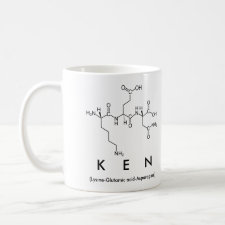
Authors: Sellergren B, Shea KJ
Article Title: Chiral ion-exchange chromatography - correlation between solute retention and a theoretical ion-exchange model using imprinted polymers.
Publication date: 1993
Journal: Journal of Chromatography A
Volume: 654
Issue: (1)
Page numbers: 17-28.
DOI: 10.1016/0021-9673(93)83061-V
Abstract: Mobile phase effects were studied in the separation of D- and L- phenylalanine anilide (D,L-PA) On an imprinted chiral stationary phase (CSP). Using an aqueous-organic mobile phase, an improved column performance was seen, reflected in a two-fold decrease in the reduced plate height and an almost doubling of the resolution as compared to when a pure organic mobile phase was used. A strong dependence of retention (k') and enantiomer selectivity (alpha) on mobile phase pH was observed. k' reached a maximum at a pH close to the pK(a) value of the solute and alpha was high at low pH value but decreased when pH exceeded the solute pK(a). Potentiometric titration data allowed estimation of the state of protonation of both the carboxylic acid containing CSP and the amino group containing solutes. The data are analyzed using a simple cation-exchange model to allow simulation of the retention as a function of mobile phase pH. The close agreement between the simulated and experimental curves for retention versus pH suggests that a simple cation-exchange mechanism controls the retention in this system. Moreover, the slightly lower average pK(a) of the imprinted polymer compared to that of a corresponding blank polymer explains the high selectivity seen at low pH values. Based on these findings, a model describing the events controlling binding and selectivity as a function of pH is proposed



Join the Society for Molecular Imprinting

New items RSS feed
Sign-up for e-mail updates:
Choose between receiving an occasional newsletter or more frequent e-mail alerts.
Click here to go to the sign-up page.
Is your name elemental or peptidic? Enter your name and find out by clicking either of the buttons below!
Other products you may like:
 MIPdatabase
MIPdatabase









